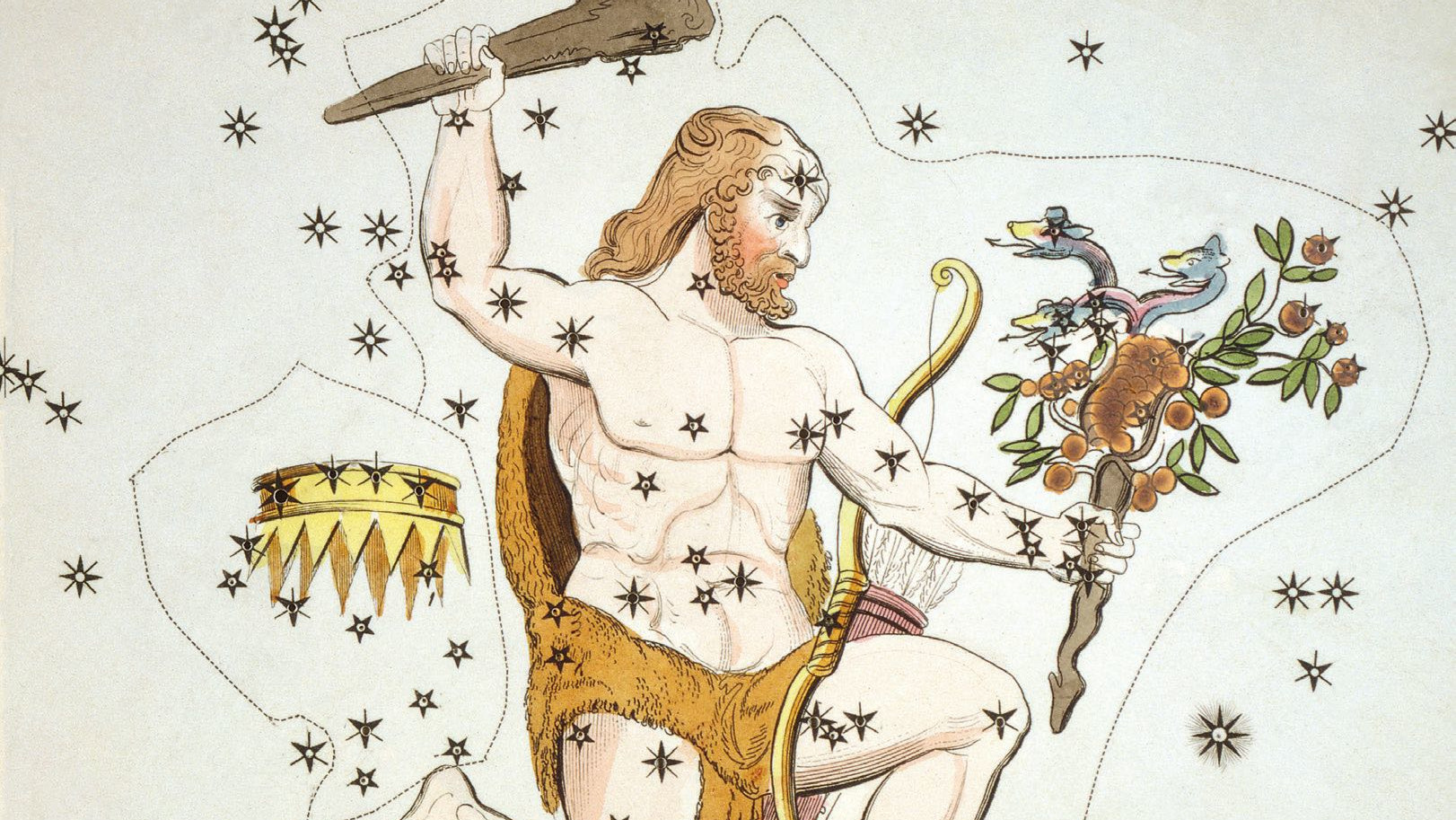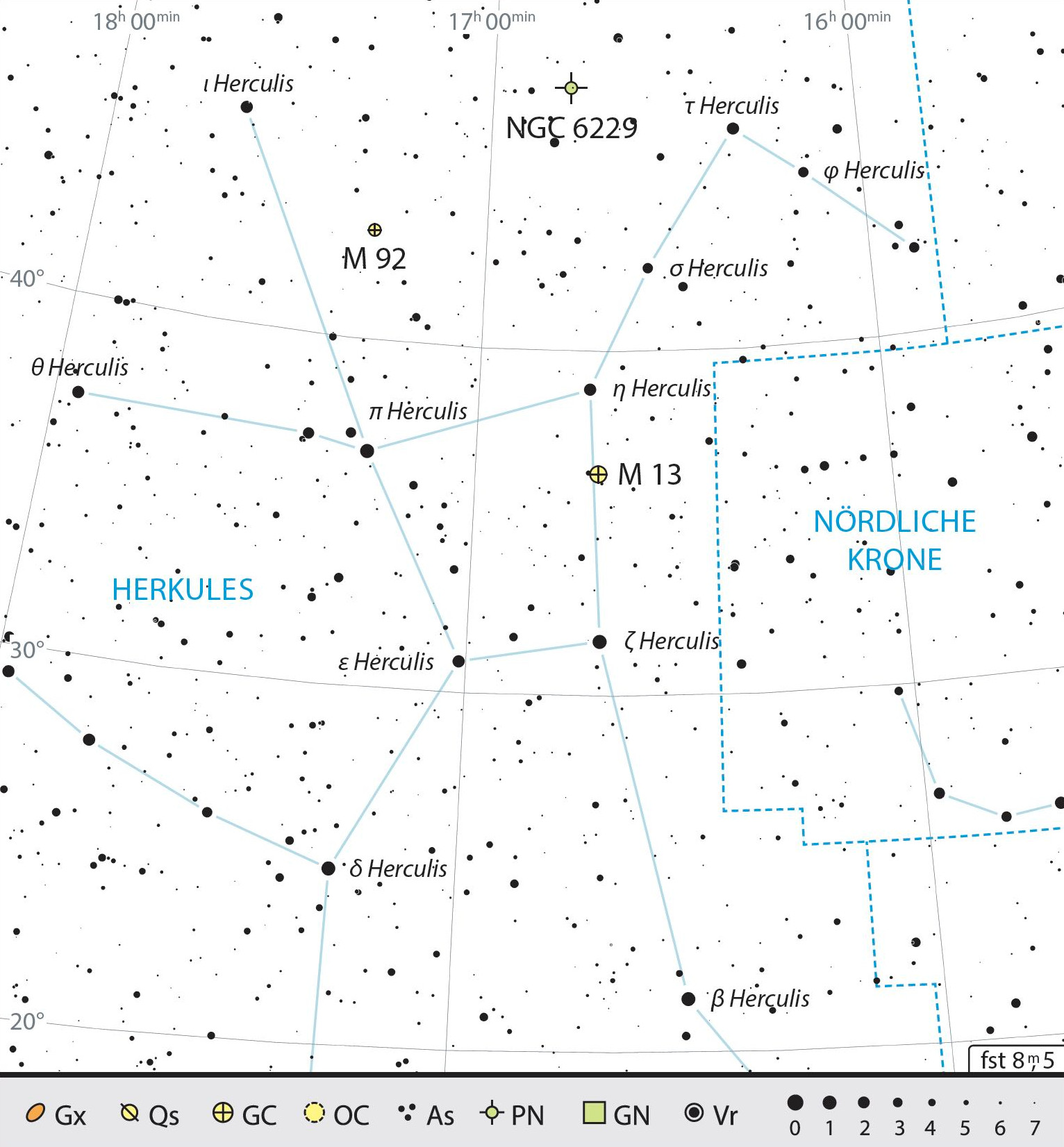Hercules
The distinctive Hercules trapezium is home to a real show-piece: Messier 13, the most beautiful globular cluster in the northern sky.
 Ancient pictures depict Hercules complete with a club in one hand, the lion’s pelt, and the stolen golden apples.
Ancient pictures depict Hercules complete with a club in one hand, the lion’s pelt, and the stolen golden apples.Greek mythology is full of heroic figures and their adventures: among them Perseus, Odysseus and Theseus. However, the most famous and strongest hero is undoubtedly Hercules. He was the illegitimate child of Zeus, the father of the gods, and the mortal Alcmene. This made Hera, Zeus' wife, so jealous that she spent her entire life pursuing Hercules.
The heavens on his shoulders
Fearing Hera's revenge, Hercules' mother rejected him immediately after his birth. However, Athena, the goddess of wisdom, took the infant to Olympus, and brought him to the sleeping Hera and put him on her breast. Hercules suckled her breast so strongly that the mother of the gods awoke and pushed the cuckoo child away, her milk spraying all over the sky. So Hercules not only became immortal thanks to Hera's milk, but he was also inadvertently responsible for the creation of the Milky Way. Hercules returned to his mother, whilst Hera let two snakes loose on the child, but the infant seized them both and strangled them.
Hercules – or Heracles in Greek – became famous mainly for his twelve legendary heroic deeds. For his eleventh task or labour, the demigod had to steal golden apples from a magic tree, which was guarded by a dragon. He cunningly managed to persuade the Titan Atlas, who carried the celestial sphere on his shoulders, to collect the apples for him. In return, Hercules agreed to support the firmament, and so to this day this powerful man is not only depicted in the sky as a constellation, he even carried it – albeit briefly – on his shoulders.
A hero with four corners
Although Hercules and his deeds are famous, his constellation is rather inconspicuous. It is a relatively extensive constellation, but the celestial observer only notices the strongest hero of legend as a rather small geometric shape. Four bright stars form a slightly skewed but still prominent square shape, which is exactly on the connecting line of the stars Arcturus and Vega.
This square section in Hercules is also home to the most beautiful globular cluster in the Northern Hemisphere: M13. With a brightness of magnitude 5.8 it is even visible with the naked eye, and can be observed as a nebular speck around six arc minutes long with binoculars. It represents the light gathered from tens of thousands of ancient giant stars. The first individual stars can be made out with a 100-mm telescope, and with even larger apertures and greater magnification, the impressive splendour of the cluster unfolds. M92 and NGC 6229 are further globular clusters in Hercules.
 Outline map of the constellation of Hercules with our observing recommendations. J. Scholten
Outline map of the constellation of Hercules with our observing recommendations. J. ScholtenAuthor: Nico Schmidt / Licence: Oculum-Verlag GmbH
